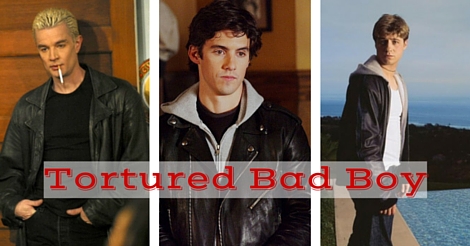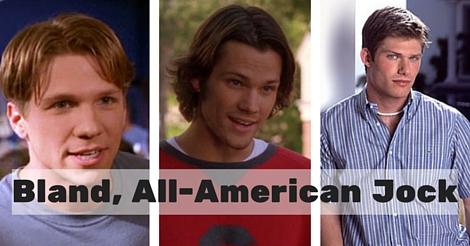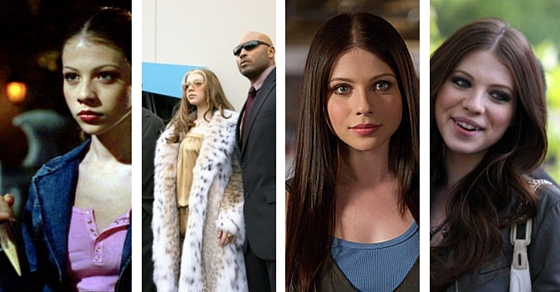As I write, the 2017 Oscars are just around the corner, and the batch of nominations has actually been bugging me a little bit. Not because the films that are up for awards aren’t artfully made and brilliantly performed explorations — because for the most part, I’ve found that they all are — but because of something that the awards show has well-established since its existence: the genre of “Oscar movie.”
The fact that the Academy Awards place heavy, dramatic works above lighter, more comedic projects is certainly not news, but it’s something that has irked me for years. Making a crowd erupt in laughter is just as impressive as bringing them to tears.
As you can probably tell from this intro, I strongly prefer comedies, rom-coms, dramedies… anything with some levity and humor… to working my way through a long drama. Obviously, that’s not always the case — one of my favorite movies of the year was Moonlight, which is as hard-drama as they come — but I would love to see the Academy give some love to the movies that comedy-nerds like myself were obsessed with. But that’s not going to happen, so I’ll just give them some love on my blog instead! Equally prestigious, right!?
NOTE: While I like to think I made it to the theater to see most of the big movies in 2016, there are a handful that either I’ve been told or I myself thought I may enjoy from last year that I haven’t seen yet. These include: The Witch, A Bigger Splash, Lion, Swiss Army Man, Hunt for the Wilderpeople, Captain Fantastic, Loving, Fences.
_________________________________________________________________
10. La La Land
dreamy, infectious, winsome
Let’s start this list off with a bang, huh? La La Land quickly went from being the must-see movie of the year to the most controversial one after cleaning up at pretty much every awards show so far. Of course, the movie’s critical success is attributed to Hollywood’s own narcissistic self-involvement, awarding a film that literally sings the praises of old Hollywood musicals. It’s also been (rightfully) dinged for having a white man in this modern savior of jazz role — there’s a scene where Ryan Gosling is mansplaining why jazz is good to Emma Stone that really makes me cringe. But all that controversy aside, this was an ambitious and well-crafted movie that I really did enjoy, and I downloaded the soundtrack right after I left the theater. Though it’s kind of become this love-it-or-hate-it thing, it’s at the very bottom of my Top 10 because I enjoyed it, but there were a lot of other films that I loved more. And I certainly don’t think it is deserving of the best-movie-ever-made type of praise it seems to be getting from Hollywood.
9. The Lobster
outlandish, sardonic, engaging
What stood out to me as one of the year’s most unique and interesting cinematic experiences was The Lobster, a movie set in a society in which being single is not permitted. Admittedly, I’m a sucker for this kind of Orwellian, dystopian satire, so I was all-in with this movie right when the premise was set up, but I think it’s engaging enough to pull in any viewer that gives it a chance. I will say it did feel a bit like two movies smooshed together, as the first half and second half are pretty much told from different perspectives, but I actually thought that choice helped add a lot of color to the strange, alien universe of the story.
8. Hello, My Name Is Doris
goofy, cringey, heartfelt
Not a lot of traditional rom-coms came out in 2016, but we did get this little gem of a movie. Before even seeing this film, I was incredibly intrigued by the pairing of lead actress Sally Field, best known for more dramatic roles, and writer-director Michael Showalter, best known for off-the-wall comedies. The combination worked perfectly for me, as the story of an older woman falling in love with her much younger coworker blended Showalter’s humor with Field’s heart. As the delusional love story rolls along, you find yourself both laughing at Field’s hilarious characterization as well as genuinely rooting for her.
7. Zootopia
smart, radical, purposeful
Surprisingly, the most beloved animated movie of the year wasn’t the Pixar joint (sorry, Finding Dory…), but Disney’s blockbuster story about an animal city torn apart by prejudice. The trend in mainstream animation recently has moved toward not only entertaining children, but also delivering a more complex storyline with references that adults will enjoy as well, and in my eyes, Zootopia is the crowning achievement of that. Not only is the film super imaginative, colorful, and packed with jokes, but it also delivers a buddy cop, detective noir storyline that is incredibly well-crafted. Oh, and of course the whole thing is an excellently executed allegory for the racial prejudices that exist in our society.
6. Hidden Figures
energizing, fun, loving
I didn’t leave a movie theater last year feeling more invigorated than after I saw Hidden Figures. There really isn’t a more likable trio of actresses working today than Taraji P. Henson, Octavia Spencer, and Janelle Monae, and each of them delivered powerhouse performances in this movie that balanced compelling emotional lows with humor and an infectious strength in the face of adversity. It is PACKED with powerful, rewarding moments where these women beat the odds and come out on top — there hasn’t been a movie in a long time that has caused me to clap and want to yell “Yes!” as many times as this one did.
5. Don’t Think Twice
original, welcoming, crushing
Just because this movie is about comedy, don’t be fooled into thinking that it’s not one of the most poignantly soul-crushing movies of the past year. The cast itself is a dream come true for any comedy fan, so of course Don’t Think Twice more than delivers on laughs, but what really makes the movie so gripping is the how quickly you feel a part of this group of friends, and how fully you take on and relate to all of the tensions and insecurities that their jokes are masking. Rather than just a fun look at an improv comedy troupe, the movie instead deals with the nasty little fractures in relationships that form from one-sided success and jealousy. It surprised me as being one of the most reflective and honest movies I saw this past year.
4. Moonlight
artful, sparse, magnetic
Obviously, I’m in pretty good company putting this movie towards the top of my Best Of list, but there’s just no arguing that it was the best drama to come out of 2016. Every aspect of this movie did exactly what it was meant to do in order to draw the viewer into the complex life of a character that is so rarely given prominent screen time. What really impressed me was how effectively the movie used silence; Chiron doesn’t have many lines at all in this thing and yet you know every thought going through his mind with each tiny, nuanced expression.
3. Kubo and the Two Strings
transportive, epic, visually stunning
Despite all of my love for Zootopia, it wasn’t the animated movie that most wowed me last year. That honor belongs to this breath-takingly gorgeous ode to ancient Japanese mythology. Kubo and the Two Strings could hold its own as one of the best animated movies of the year for its beauty alone, but the reason it soars towards the top of my list is that it combines that stunning animation with a wildly original hero’s quest story that becomes both surprisingly dark and incredibly poignant. If you’re anything like me, you’ll find yourself not wanting to leave your seat after the credits roll, just wishing yourself back into that impossibly enthralling universe.
2. Edge of Seventeen
endearing, authentic, brash
The 2016 movie I’m most definitely going to rewatching again and again in years to come is Edge of Seventeen, which boasted what I think is one of the sharpest, most hilarious, and most endearing scripts of the year. I can’t overstate how great this script (by Kelly Fremon Craig) is — it’s got the quick, colloquial, instantly quotable feel of a Diablo Cody piece. On-screen, the credit all goes to Hailee Steinfeld’s ability to draw the audience in with her quick-witted, sardonic jabs, and then twist her humor into teenage insecurities, making her empathetic but with a what’s-she-going-to-say-next edge. I’ll also say that newcomer Hayden Szeto, who plays an awkward high school student named Erwin, makes it absolutely impossible for anyone not to smile from ear to ear whenever he’s on screen.
1. Sing Street
charming, exuberant, touching
La La Land may be the 2016 movie everyone’s singing along to, but for my money, it doesn’t hold a candle to the overwhelming charm of Sing Street. Where La La Land goes all-out with sprawling, dreamy sequences (which I loved, by the way), this instantly engaging coming-of-age story delivers the same musical wow factor on the stage of a school gym. Filled to the brim with strange and lovable original characters against the inviting cobblestone backdrop of 1980s Ireland, the movie hits it out of the park in every department: comedy, drama, fantasy, music, even adventure. And if you aren’t tearing up during the final scene then you just aren’t human.
_________________________________________________________________
Shoutouts To The Other Movies I Loved That NEARLY Made My List:
Deadpool, The Nice Guys, Love and Friendship, Popstar: Never Stop Never Stopping, Other People, Hell or High Water, Moana, Arrival



















